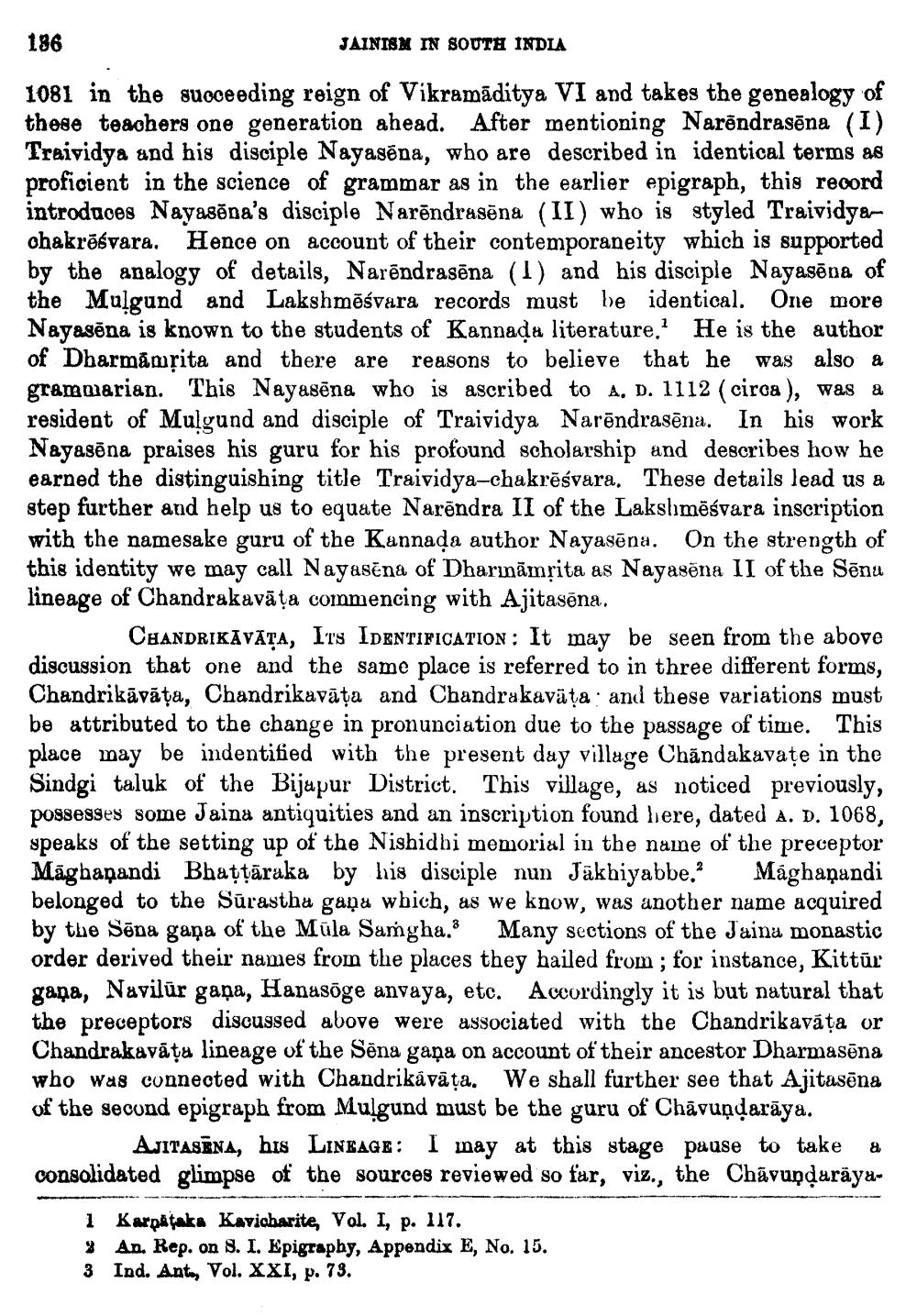________________
Na
196
JAINISX IN SOUTH INDIA 1081 in the suoceeding reign of Vikramāditya VI and takes the genealogy of these teachers one generation ahead. After mentioning Narõndrasõna (I) Traividya and his disciple Nayasēna, who are described in identical terms as proficient in the science of grammar as in the earlier epigraph, this record introduces Nayasõna's disciple Narēndrasēna (II) who is styled Traividyam chakrāśvara. Hence on account of their contemporaneity which is supported by the analogy of details, Narendrasēna (1) and his disciple Nayasõna of the Mulgund and Lakshmēśvara records must be identical.
agēna is known to the students of Kannada literature. 1 He is the author of Dharmāmrita and there are reasons to believe that he was also a grammarian. This Nayasēna who is ascribed to A. D. 1112 (circa ), was a resident of Mulgund and disciple of Traividya Narēndrasēna. In his work Nayasēna praises his guru for his profound scholarship and describes how he earned the distinguishing title Traividya-chakrēśvara. These details lead us a step further and help us to equate Narēndra II of the Lakslimēśvara inscription with the namesake guru of the Kannada author Nayasēna. On the strength of this identity we may call Nayasēna of Dharināmțita as Nayasēna II of the Sēnu lineage of Chandrakavāța commencing with Ajitasõna.
CHANDRIKĀVĀTA, ITS IDENTIFICATION: It may be seen from the above discussion that one and the same place is referred to in three different forms, Chandrikāvāța, Chandrikavāța and Chandrakavāta and these variations must be attributed to the change in pronunciation due to the passage of time. This place may be indentified with the present day village Chãndakavațe in the Sindgi taluk of the Bijapur District. This village, as noticed previously, possesses some Jaina antiquities and an inscription found here, dated a. D. 1068, speaks of the setting up of the Nishidhi memorial in the name of the preceptor Māgbanandi Bhattāraka by his disciple nun Jākhiyabbe. Mághaṇandi belonged to the Sūrastha gana wbich, as we know, was another name acquired by the Sēna gaña of the Mula Samgha. Many sections of the Jaina monastic order derived their names from the places they hailed from; for instance, Kittūr gaña, Navilūr gana, Hanasõge anvaya, etc. Accordingly it is but natural that the preceptors discussed above were associated with the Chandrikaváța or Chandrakavāta lineage of the Sēna gaña on account of their ancestor Dharmasõna who was connected with Chandrikávāta. We shall further see that Ajitasēna of the second epigraph from Mulgund must be the guru of Chāvuņdarāya.
AJITASĀNA, his LINEAGE: I may at this stage pause to take a consolidated glimpse of the sources reviewed so far, viz., the Chāvuşdaraya
1 Karpataka Kavicharite, Vol. I, p. 117. % An. Rep. on 8. I. Epigraphy, Appendix E, No. 15. 3 Ind. Anto, Vol. XXI, p. 73.




